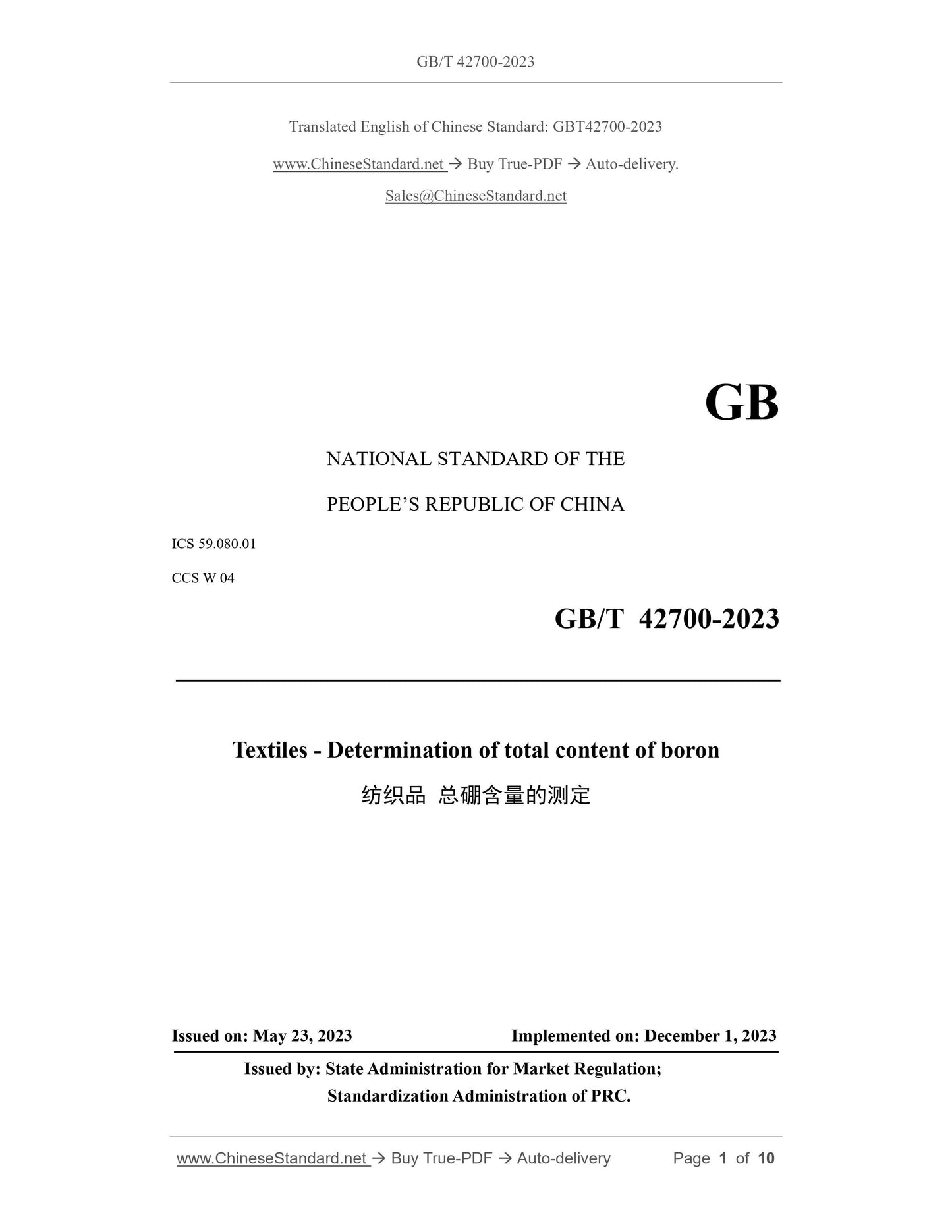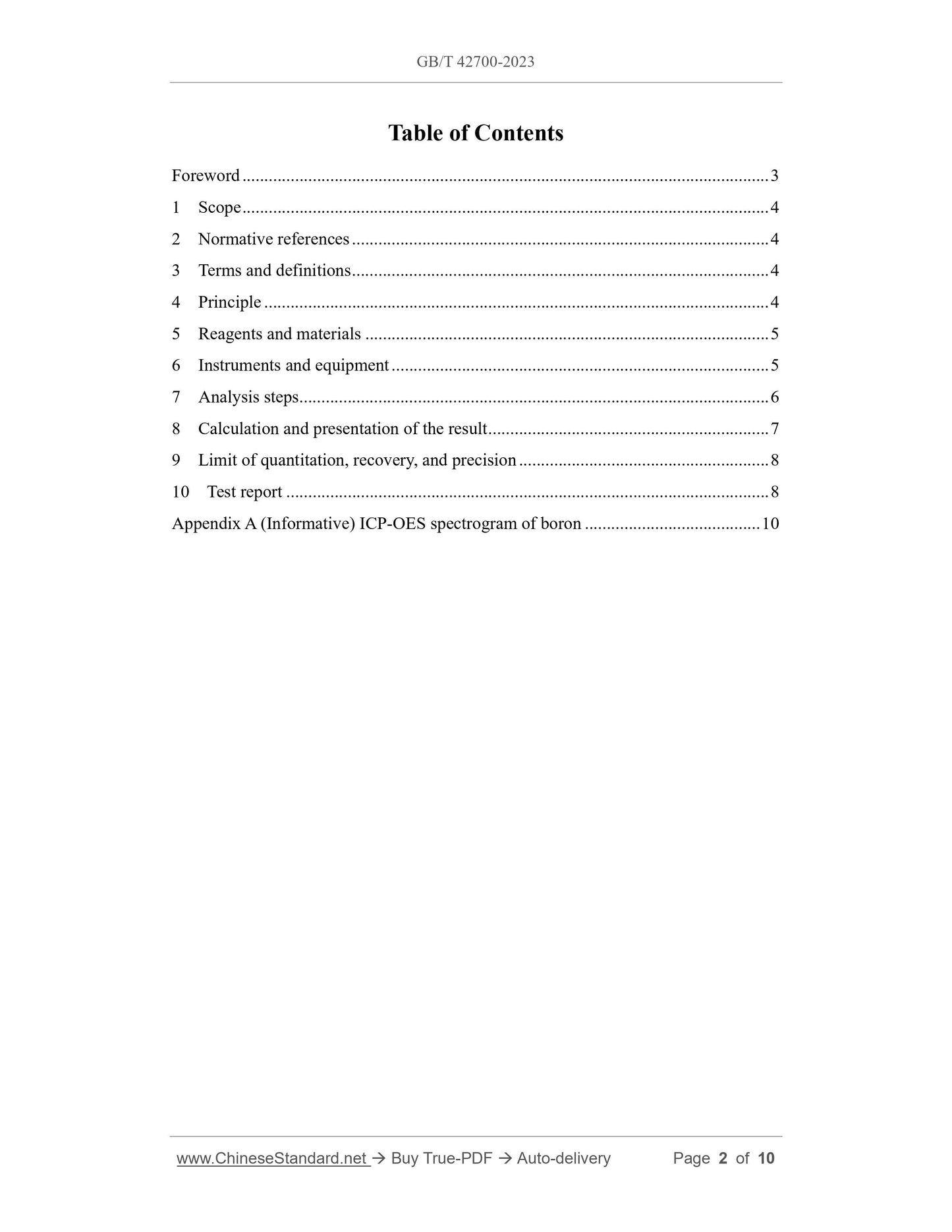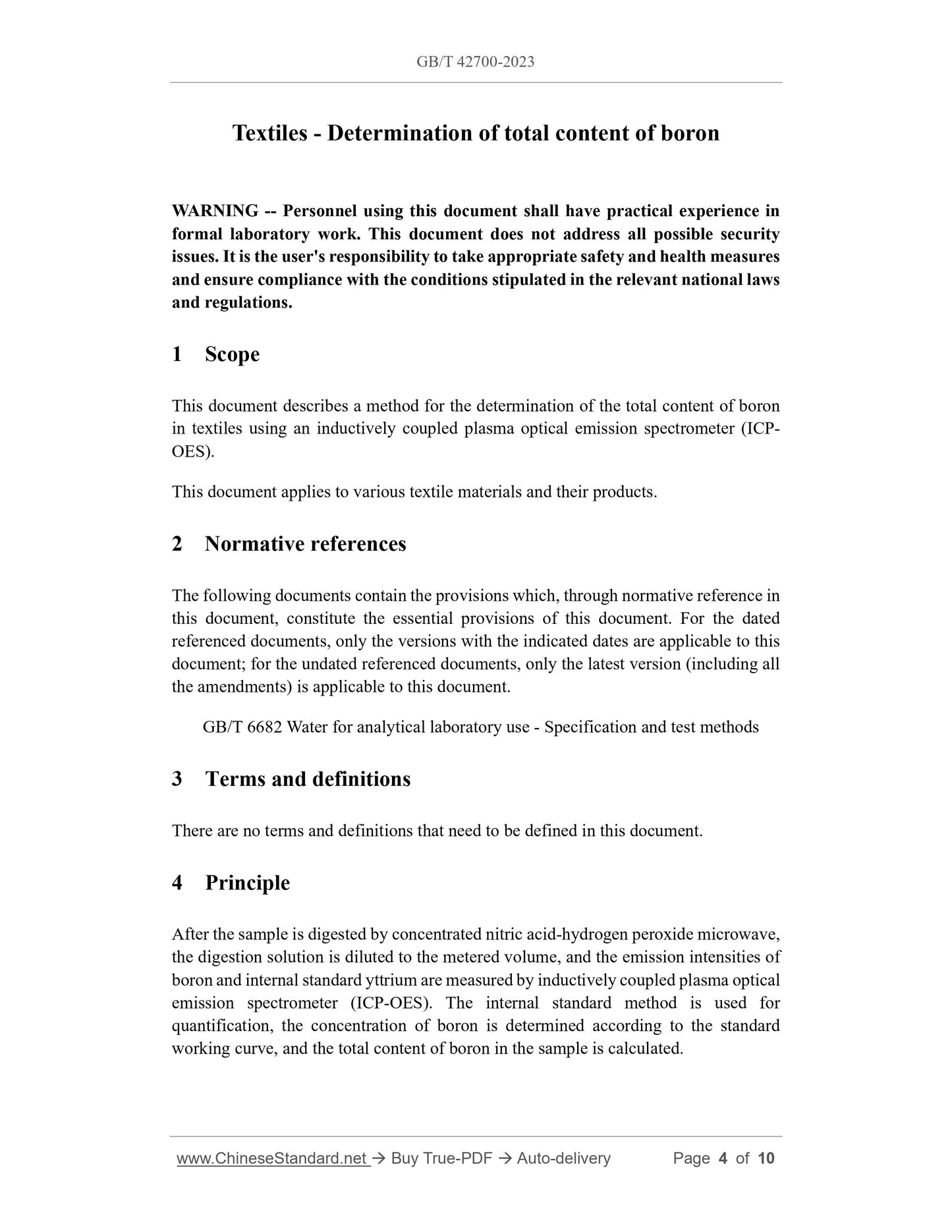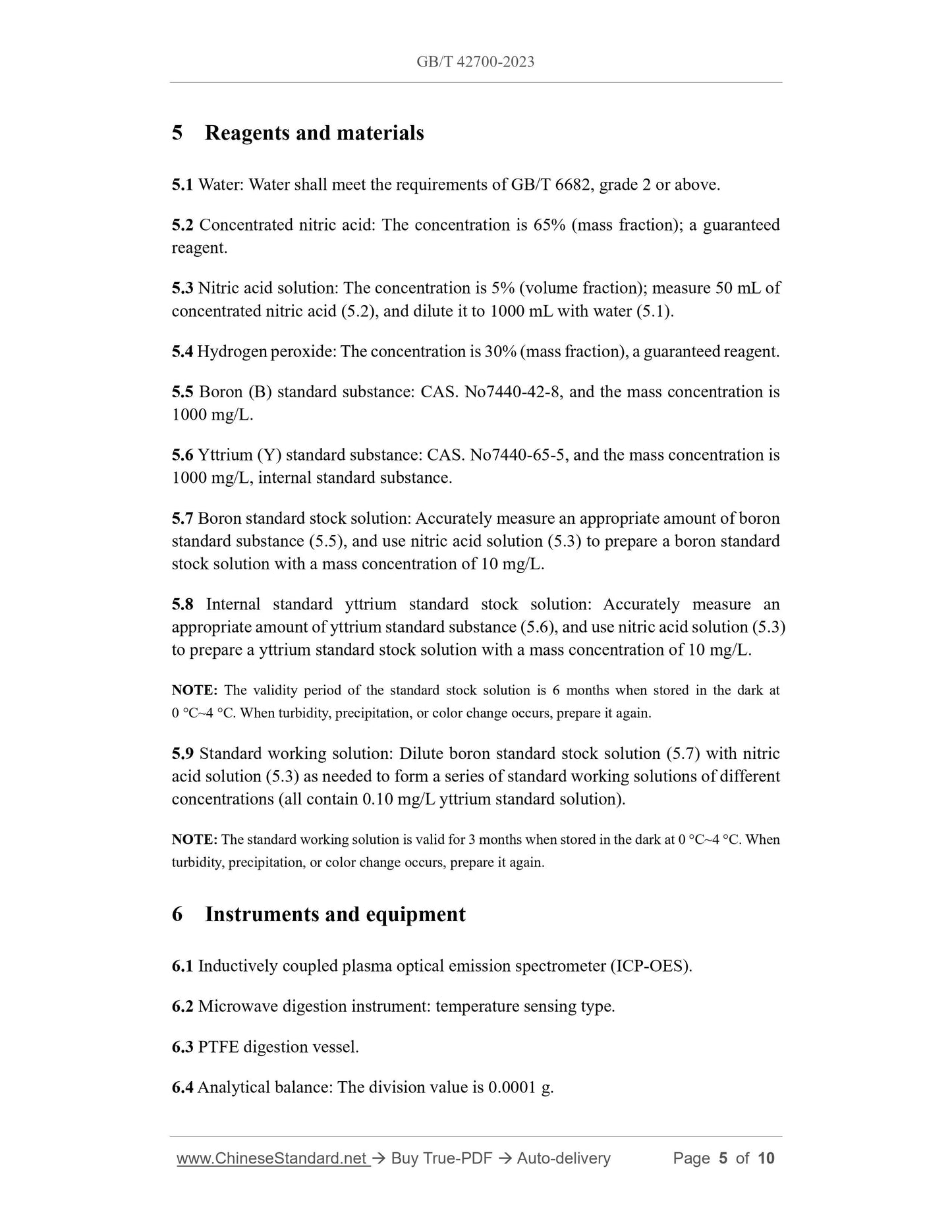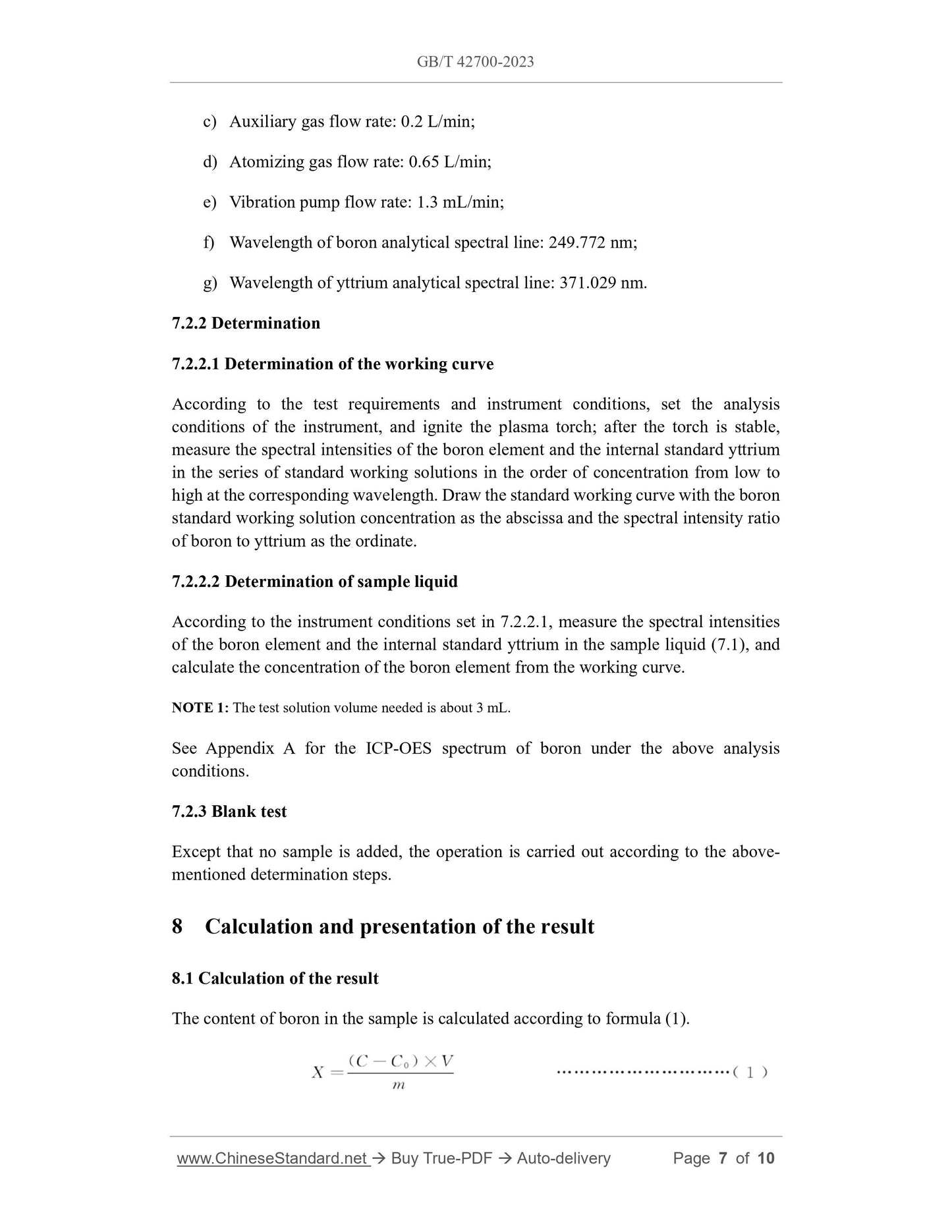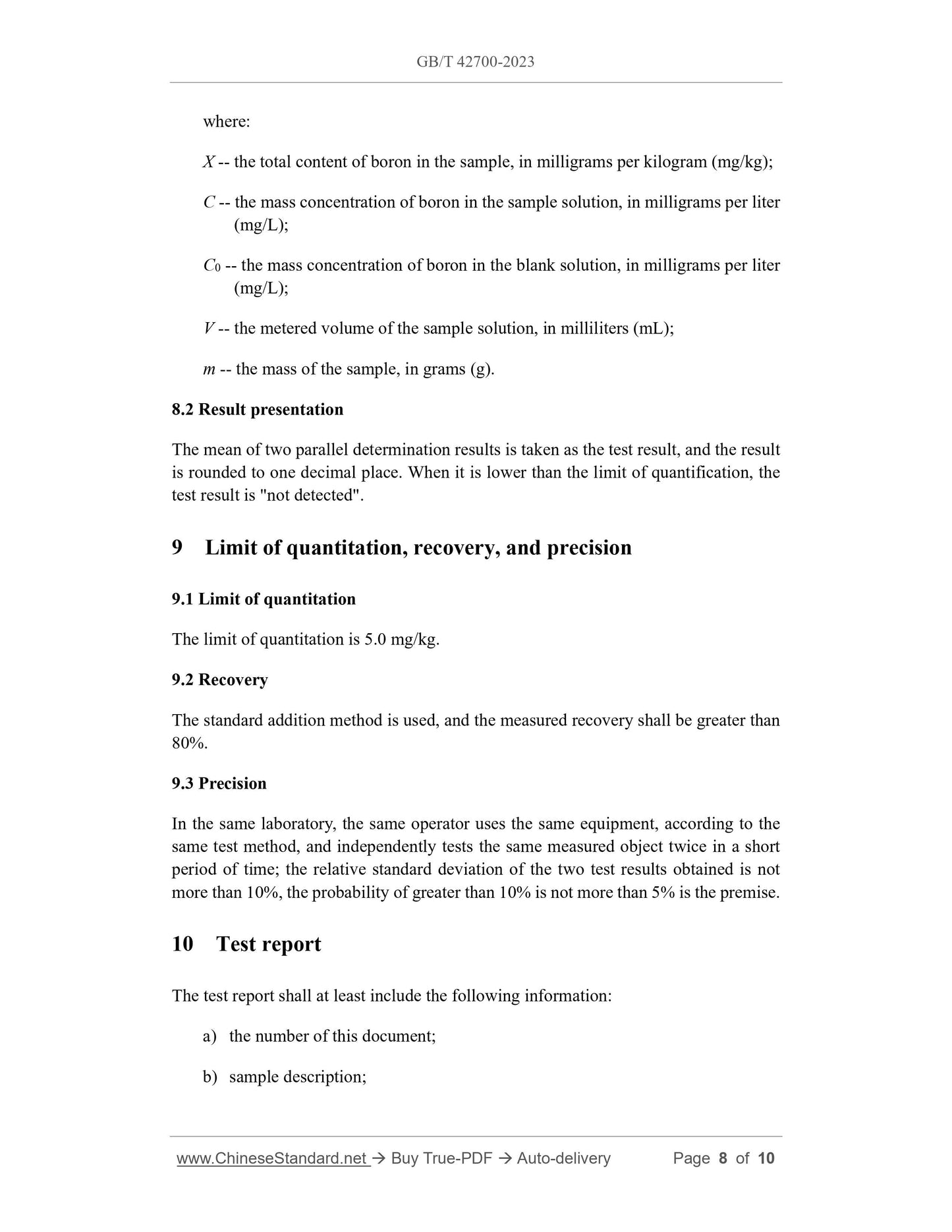1
/
of
6
www.ChineseStandard.us -- Field Test Asia Pte. Ltd.
GB/T 42700-2023 English PDF (GB/T42700-2023)
GB/T 42700-2023 English PDF (GB/T42700-2023)
Regular price
$185.00
Regular price
Sale price
$185.00
Unit price
/
per
Shipping calculated at checkout.
Couldn't load pickup availability
GB/T 42700-2023: Textiles - Determination of total content of boron
Delivery: 9 seconds. Download (and Email) true-PDF + Invoice.Get Quotation: Click GB/T 42700-2023 (Self-service in 1-minute)
Newer / historical versions: GB/T 42700-2023
Preview True-PDF
Scope
This document describes a method for the determination of the total content of boronin textiles using an inductively coupled plasma optical emission spectrometer (ICP-
OES).
This document applies to various textile materials and their products.
Basic Data
| Standard ID | GB/T 42700-2023 (GB/T42700-2023) |
| Description (Translated English) | Textiles - Determination of total content of boron |
| Sector / Industry | National Standard (Recommended) |
| Classification of Chinese Standard | W04 |
| Classification of International Standard | 59.080.01 |
| Word Count Estimation | 12,121 |
| Date of Issue | 2023-05-23 |
| Date of Implementation | 2023-12-01 |
| Issuing agency(ies) | State Administration for Market Regulation, China National Standardization Administration |
Share
